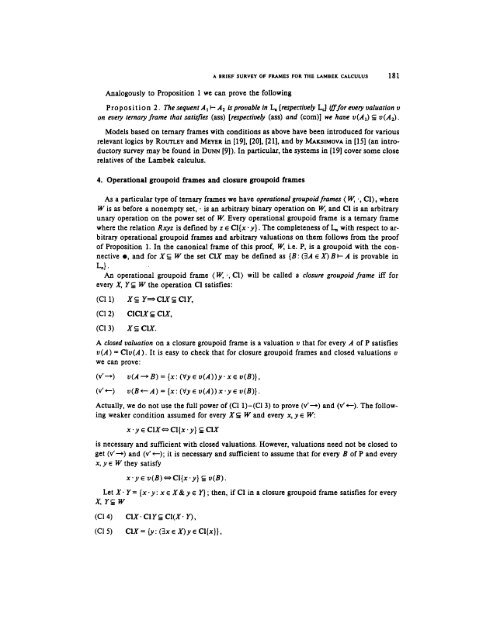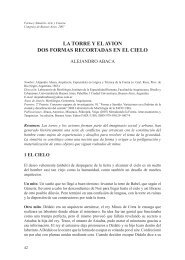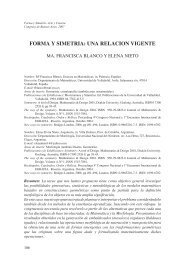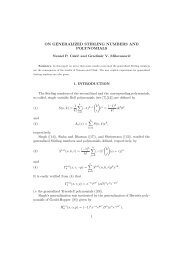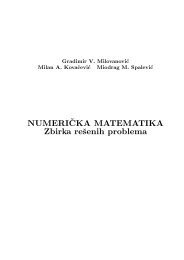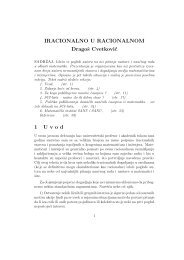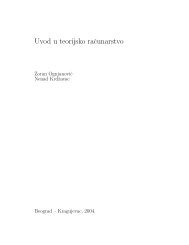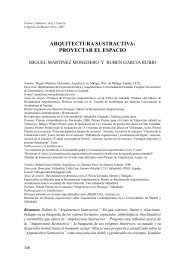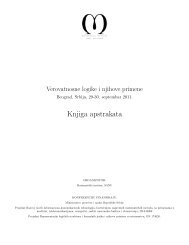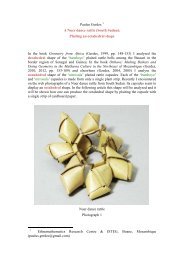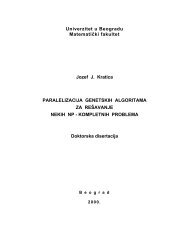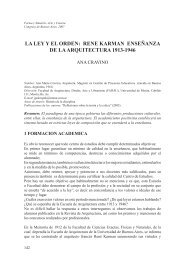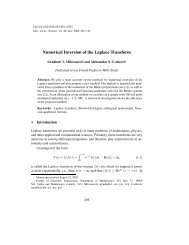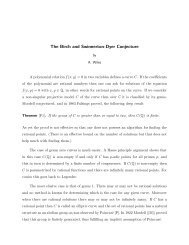A BRIEF SURVEY OF FRAMES FOR THE LAMBEK CALCULUS
A BRIEF SURVEY OF FRAMES FOR THE LAMBEK CALCULUS
A BRIEF SURVEY OF FRAMES FOR THE LAMBEK CALCULUS
- No tags were found...
You also want an ePaper? Increase the reach of your titles
YUMPU automatically turns print PDFs into web optimized ePapers that Google loves.
Analogously to Proposition 1 we can prove the followingA <strong>BRIEF</strong> <strong>SURVEY</strong> <strong>OF</strong> <strong>FRAMES</strong> <strong>FOR</strong> <strong>THE</strong> UMBER <strong>CALCULUS</strong> 181Prop o s it i o n 2. The sequent A I + A2 is provable in L, [ respectiuely L J iff for euery valuation uon euery ternav frame that satisfies (ass) [respectiuety (ass) and (corn)] we have u(A,) E u(A,).Models based on ternary frames with conditions as above have been introduced for variousrelevant logics by ROUTLEY and MEYER in [19],(201, [21], and by MAKSIMOVA in [lS] (an introductorysurvey may be found in DUNN [9]). In particular, the systems in (191 cover some closerelatives of the Lambek calculus.4. Operational groupoid kames and closure groupoid framesAs a particular type of ternary frames we have operational groupoid frames ( W, ., Cl), whereW is as before a nonempty set, . is an arbitrary binary operation on W, and C1 is an arbitraryunary operation on the power set of W. Every operational groupoid frame is a ternary framewhere the relation Rxyz is defined by z E Cl(x ey}. The completeness of L,, with respect to arbitraryoperational groupoid frames and arbitrary valuations on them follows from the proofof Proposition 1. In the canonical frame of this proof, W, i.e. P, is a groupoid with the connective0, and for X E W the set CLY may be defined as (B: (3A E X) Et- A is provable inL”}.An operational groupoid frame (W, *, Cl) will be called a closure groupoid frame iff forevery X, Y S W the operation C1 satisfies:((211) xs Y*CLYE ClY,(C12)ClCLY E CLY,((213) XE CLY.A closed valuation on a closure groupoid frame is a valuation v that for every A of P satisfiesu(A) = Clv(A). It is easy to check that for closure groupoid frames and closed valuations uwe can prove:(v’+)(v’+)u(A+B)={x: (Vy~v(A))y.x~u(B)},u(B+A) = [x:(VYE u(A))x.y~ u(B)}.Actually, we do not use the full power of (C1 l)-(CI 3) to prove (v’+)ing weaker condition assumed for every X E W and every x, y E W:x.yEClXoCl[x.y}ECLYand (v’+). The follow-is necessary and sufficient with closed valuations. However, valuations need not be closed toget (v’+) and (v’ +); it is necessary and sufficient to assume that for every B of P and everyX, y E W they satisfyX - ~ v(B)oCl{x.y} EE u(B).Let X . Y = {x . y : x E X & y E Y) ; then, if C1 in a closure groupoid frame satisfies for everyx, YE w(C14)CIX-CIYS CI(X* Y),((215) CLY = b: (3x E X)y E Cl(X}},


